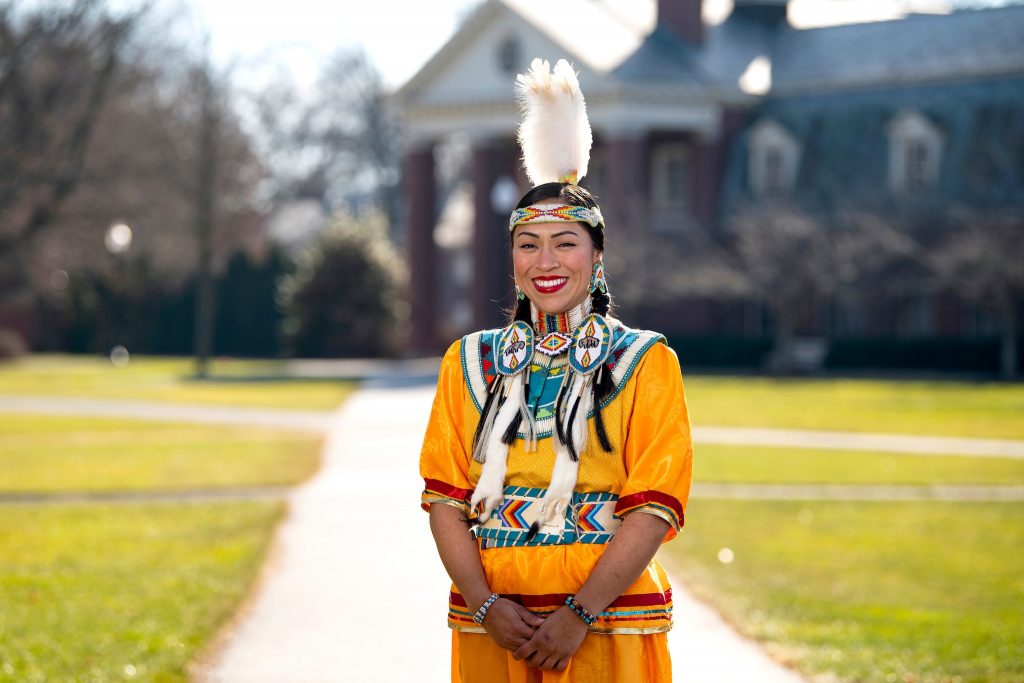Long ago, before the academic buildings of Bucknell were erected, a plethora of resources covered the landscape. Over the course of history, the site of the Susquehanna attracted an abundance of Native peoples to the land. In particular, the Susuquehannock tribe resided near Bucknell University until settlers arrived in the late 1700s. The colonists brought diseases and ambitions of taking the land for themselves.
Fifteen minutes from Bucknell stood the largest trade center for Native Americans, located in what is now called Sunbury. Author John Moore said in Sunbury, “You could walk through Shamokin, which is here, and hear five different languages.”

Searching for Native American representation on Bucknell’s campus is not an easy task. After being directed from the admissions office to the DEI office, two emails still were left unanswered about the enrollment and initiatives of Native students. Lisa Keegan, the Vice President for Student Enrollment, Engagement, and Success, wrote in an email, “We are in early conversations about expanding efforts to increase Native representation on campus. I don’t have many details at this time to share”. The question remains: what are Bucknell’s current efforts? From the enrollment statistics at Bucknell in 2021, there was one undergraduate and one graduate student categorized as “American Indian/Alaska”. That means a stark 0% of the undergraduate population was American Indian/Alaska.
Sean Daley at the Lehigh Institute for Indigenous Studies says, “Working with American Indians, indigenous people, whatever term you want to use, Native Americans is like working with no other racial, ethnic, or political group because there are so many layers with indigenous people that aren’t there with other groups.” However, Dr. Daley also noted, “working on indigenous issues at Lehigh has been actually very problematic because the internal structure, they’re not willing to adjust.”
Sierra Pete, MS’22, is a Navajo alumnae of Bucknell’s Master’s program. Sierra grew up in Montana and attended the University of Salt Lake City. Through a Google search, Sierra found Bucknell’s master program. After reading some of Dr. Benowitz-Fredericks and reaching out to her, Sierra went to Alaska in the summer of 2019 to see her research with Seabirds. After this exciting trip, Dr. Benowitz-Fredericks suggested a master’s in biology instead of Sierra’s initial goal of animal science. “I moved all the way across the country. I had never been over here before… I had no idea what I was getting myself into, but I was just really excited.”
After obtaining her Master’s, Sierra stayed in Lewisburg to finish her thesis and is currently the costume studio manager at Bucknell for the theater and dance program.
Regarding the native community in Utah versus here, Sierra explains, “There is a very active native community there.” Nearby, powows can be attended, and the University of Utah provides a Native American research internship program.
Professor James Orr of Bucknell has familial roots within the Native American community tracing back to his great-grandmother and her father, who were listed on the Bureau of Indian Affairs Potawatomi allotments under the 1887 Dawes Act. Professor Orr also discusses his family’s connections to their lineage and the fact that his nephews are involved in indigenous studies at the university level.
Professor Orr says, as he trained for a job as a historian of Japan, who people identify as and why has been a “big part of my research career.”

In Bucknell’s academic efforts, Professor Orr notes that as an educational institution, it is important to incorporate education on Native American history and presence. Regarding the Bucknell Greenway, he thinks it would be helpful if a trailside board is added to Franck’s ‘Seven Generations’ sculpture to raise its prominence and outline its controversial history. The Seven Generations sculpture is located on Bucknell’s campus between Kress Hall and the Career Center. Franck was inspired by the Iroquois Great Law, which, according to the plaque at the base of the figure, reads, “In all our deliberations we must be mindful of the impact of decisions on the next seven generations – From the Great Law of the Six Nations Iroquois Confederacy.” Another symbol of Native Americans on Bucknell’s campus is the Tree of Peace, a symbol of friendship and peace. The tree was commemorated by the Onondaga Chief Oren Lyons in 1990 and stands in front of the Kenneth Langone Athletics & Recreation Center.
Moreover, Professor Orr explains, “Some courses in the history department have been trying to expand people’s minds instead of closing them off.” Going forward, he would like to see Bucknell continue encouraging this type of academic engagement.
Regarding Bucknell’s general lack of Native presence, Sierra has asked herself, “If there’s nothing here, how do you go out and recruit? Like, how do you sell this place to potential Native students?”
Additionally, regarding encouraging Indigenous students to attend Bucknell, Professor Orr suggests using some of the existing programs already at Bucknell to encourage native people, which he feels is true for all types of prospective students.
Pennsylvania, as a state, has no federally or state-recognized tribes or reservations. Pennsylvania’s dark past also rightfully stains the state’s reputation. Sierra says, “almost all natives would know, like, Carlisle boarding school. A lot of, like, people’s parents or grandparents went there. So, that’s kind of what Pennsylvania’s known for”. The Carlisle Indian School was infamous for its forced assimilation of Native youths and “break[ing] them of their culture.”
Sierra said when she considers recommending Bucknell to a prospective native student, “Like, you’re gonna get a very good education. It’s not. It’s not a horrible place. You’re gonna meet great people, but you will miss them if you’re close with your community or family. There is no native representation here.”
Interview Clips
https://mediaspace.bucknell.edu/media/Clip+From+Interview+with+Sierra+Pete/1_9cbdyy2p
Works Cited / Suggesting Readings
Bucknell University (n.d.). ENROLLMENT. Bucknell.edu. https://www.bucknell.edu/sites/default/files/institutional-research/enrollment_22-23.pdf
Libert, L. (2017, February 28). Tuesday’s Objet: Frederick Franck. https://museum.bucknell.edu/2017/02/28/tuesdays-objet-frederick-franck/
Kimmel, S. (2022, December 1). Woman of the West. Bucknell University Magazine. https://magazine.bucknell.edu/issue/winter-2022/woman-of-the-west/
Comments